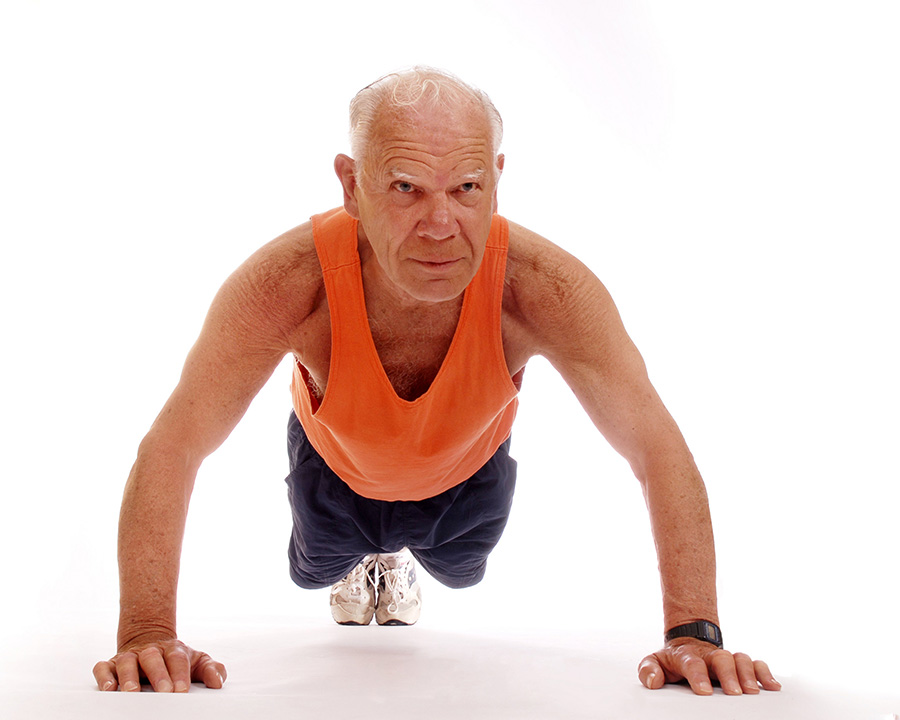


Joseph R. Anticaglia MD
Medical Advisory Board

I was watching TV and saw this diminutive 99 year old man, drop to the floor and began doing push-ups. It’s rare that anyone can reach the age of 99 but to do push-ups is another matter indeed. Could push-ups be a link to his longevity and good heart health?
Cardiovascular disease (CVD) is the leading cause of death in the United States. We know that proper diet and keeping physically fit are big pluses to good health. We know that not being overweight, not smoking and drinking alcohol in moderation help to keep you fit. But how do push-ups enter the picture?
In an article published in JAMA on February15, 2019 the authors posed a question: Is there a simple, low- cost test that can be done in the doctor’s office or anywhere that can predict cardiovascular disease risk?
They evaluated 1,104 active, male firefighters from Indiana. They documented the number of push-ups initially completed by the firemen to get a baseline number. At the start of the study, the mean age of the men was 39.6 years and they had an average body mass index (BMI) of 28.7. The study included a push-up ability test, an exercise treadmill test plus other parameters.
They stopped the experiment if the men were exhausted or developed symptoms such as dizziness, lightheadedness, chest pain or shortness of breath. They also stopped counting if a fireman reached 80 push-ups or if he took too much time between push-ups.
After ten years of follow-up, the authors reported the men who could not do ten push-ups at the start of the study had a higher incidence of coronary heart disease (heart failure, sudden cardiac death).
The men who could do 11 or more push-ups had significantly reduced their risk of subsequent cardiovascular disease. And, those who can do 40 or more push-ups reduced their risk of heart disease by 96 per cent.
Push-up is a functional test, a test which tells you about your muscular strength and physical fitness. More than 50% of bodyweight is lifted during a full push-up which promotes cardiorespiratory fitness (CRF).
People with low CRF do poorly on exercise stress tests, have worse cardiovascular disease profiles, for instance, blood pressure, total cholesterol and glucose tests. It places them at a higher risk for heart attacks and strokes.
Surprisingly, millions of Americans cannot do one push-up. If you’re one of them, the good news is that you can readily change this situation. First, consult your family doctor to make sure it’s ok to start this project. He or she might suggest a physical trainer. Next, to find out what’s your baseline or starting point, do as many push-ups as you can when you first attempt to do push-ups. It can vary from one to ten or more than ten. Gradually add more push-ups to the baseline as you become stronger.
Justin Yang, writing in a JAMA 2019 article said, “Our findings provide evidence that push-up capacity could be an easy, no-cost method to help assess cardiovascular disease risk in almost any setting.” The authors also concluded that push-ups could better predict cardiovascular risk compared to the exercise treadmill test.
Like most research, this study has limitations. Since the study consisted of middle-aged, active firemen, the study results may not be applicable to women, older or sedentary individuals. The authors note that good health is more than your ability just to do push-ups. There’s no magic exercise that will on its own keep you healthy.
But push-ups might be considered as another risk factor alongside of waist to hip ratio, body-fat percentage and distribution and certain laboratory tests. They can make you aware of your need for physical fitness and might make you think about eating more healthily. There’s no cost involved, you don’t need fancy equipment, they’re easily measurable and in most instances, you can start doing them right now. And it can reduce your risk of heart attacks and strokes!
This article is intended solely as a learning experience. Please consult your physician for diagnostic and treatment options.